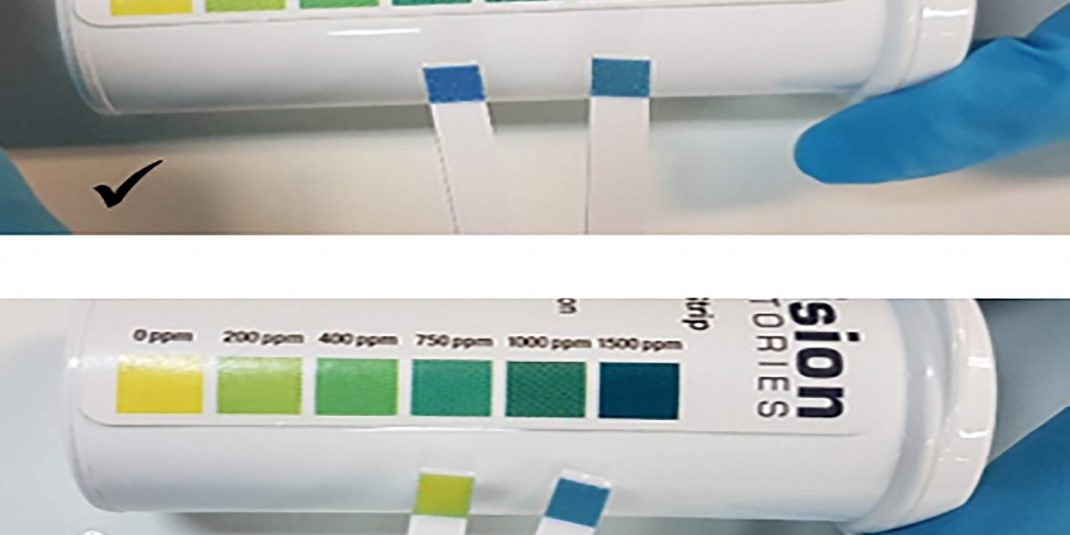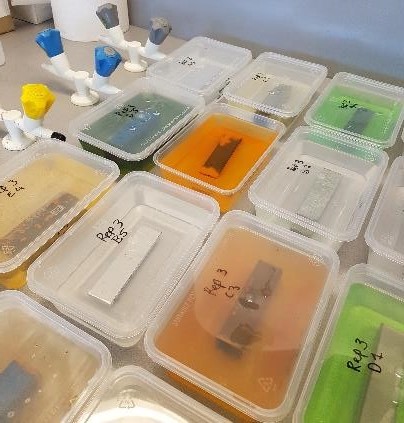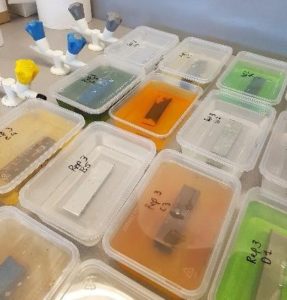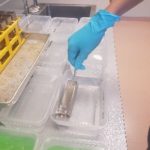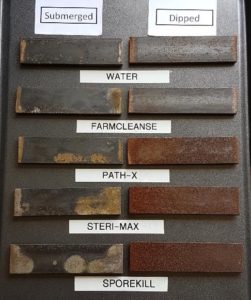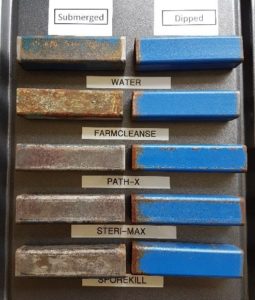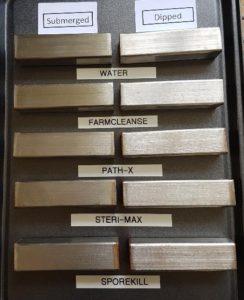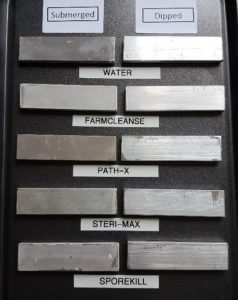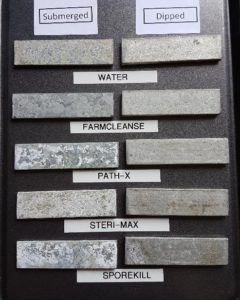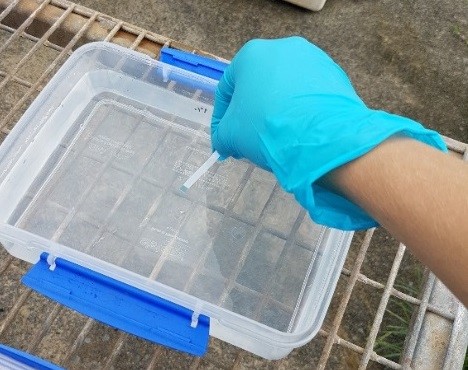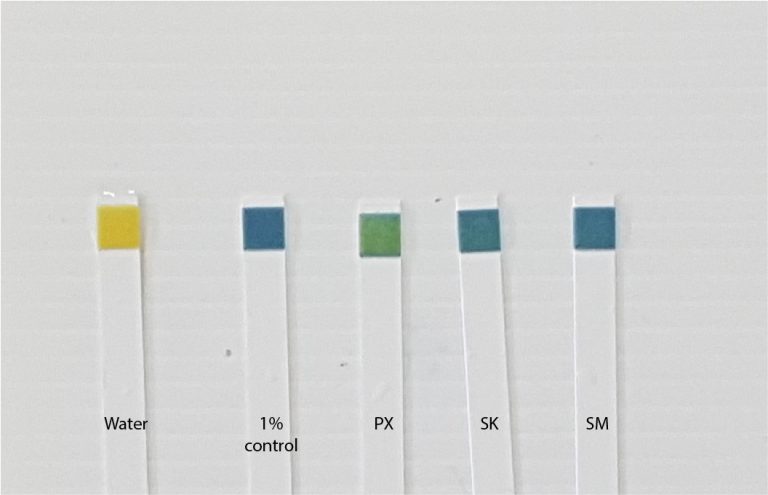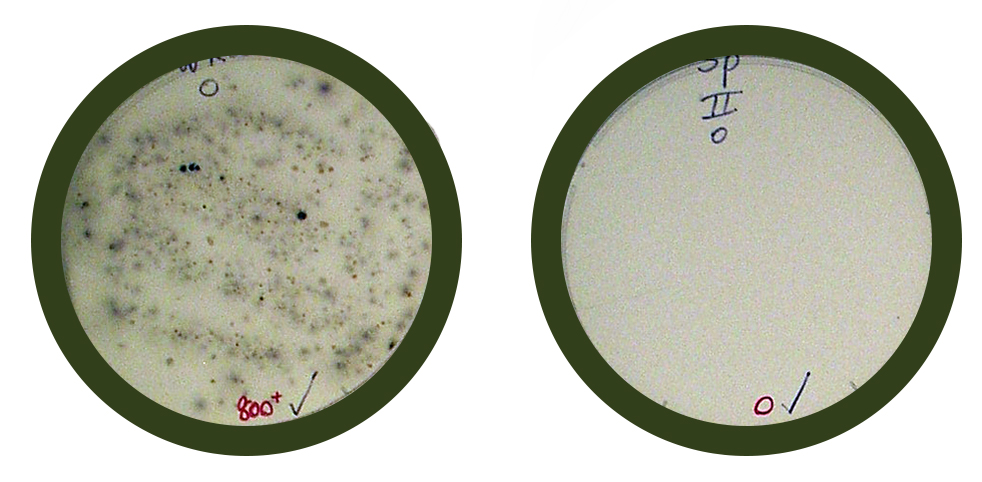Test strips can help determine the effectiveness of your disinfecting solution
Disinfectant products that contain the active ingredient didecyl dimethyl ammonium chloride (DDAC – e.g. Sporekill®, Steri-max® and Path-X™) or benzalkonium chloride (BZK – e.g. Bactex, Agriquat) have shown to kill fungal spores that cause Panama disease.
For these products to be effective, it is important they are mixed at a 1% solution. Our researchers have investigated a range of test strips to measure the concentration of the active ingredient of disinfectant products used in footbaths, spray shuttles and drive-through dips.
High level (0 – 1500ppm) or extra high level (0 – 10,000ppm) quaternary ammonium compound test strips are an easy method of testing the active ingredient DDAC or BZK by comparing the colour development on the test strip to a colour scale.
For your information...
1% solution of 120g/L DDAC (e.g. Steri-max®) equates to 1200ppm
1% solution of 100g/L BZK (e.g. Bactex) equates to 1000ppm
1% of solution of 250g/L BZK (e.g. Agriquat) equates to 2500ppm *
*(either dilute and use high level test strips or use extra high level (0 – 10 000ppm) test strips)
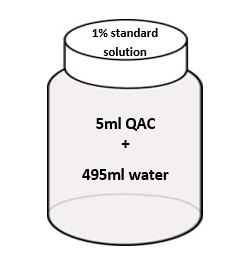
For best results, make up a 1% standard solution of the DDAC or BZK disinfectant product you are using. This will allow you to directly compare the exact colour of a 1% solution to the colour of the disinfectant sample you want to test.
Keep this solution in a sealed container for future use.
It is recommended...
It’s recommended that you dip your test strip into the 1% standard solution and the disinfectant sample (e.g. footbath) simultaneously, that way you can compare colour instantly.
1. Dip
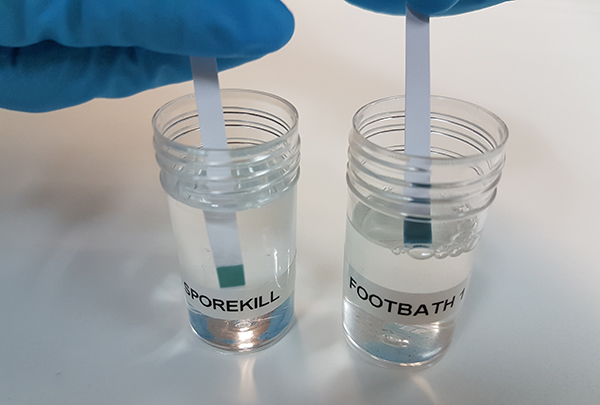
Dip test strips into the 1% standard solution and your disinfectant sample and remove immediately.
2. Compare
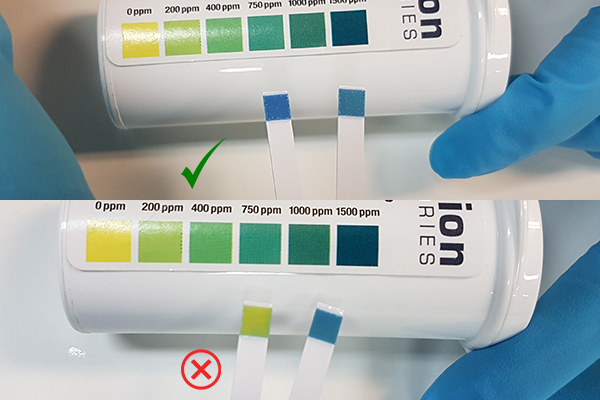
Immediately compare test strip to colour scale (maximum reading time of 5 seconds).
The colour of your disinfectant sample should be greater than or equal the 1% standard solution (as per image above with green tick).
In summary:
- Use test strips to regularly check the disinfectant solutions in your footbaths, spray shuttles and wash-down facilities to ensure they are at an effective concentration (1% solution).
- Ensure there is less than 5% soil in footbaths and wash-down facilities – that is equivalent to 1g of soil to 20mL of disinfectant solution (1% DDAC or BZK product).
- Be aware that soil with a high clay content may have the potential to influence test strip results.
- Different water sources do not appear to influence the test strip results.
- With no soil present in your disinfecting solution, DDAC products prepared to a 1% solution are still effective at managing spores that cause Panama disease.
For more information about this work or for details on where to purchase the test strips contact the better bananas team –betterbananas@daf.qld.gov.au or 13 25 23
Please note...
There may be factors beyond the scope of the research that has been undertaken using the quaternary ammonium compound test strips which have the potential to influence results.
This trial was funded as part of project BA14013 Fusarium wilt Tropical Race 4 – Biosecurity and sustainable practices which was funded by Hort Innovation, using the Banana research and development levy, co-investment from the Queensland Department of Agriculture and Fisheries and contributions from the Australian Government. Hort Innovation is the grower-owned not-for-profit research and development corporation for Australian Horticulture.



